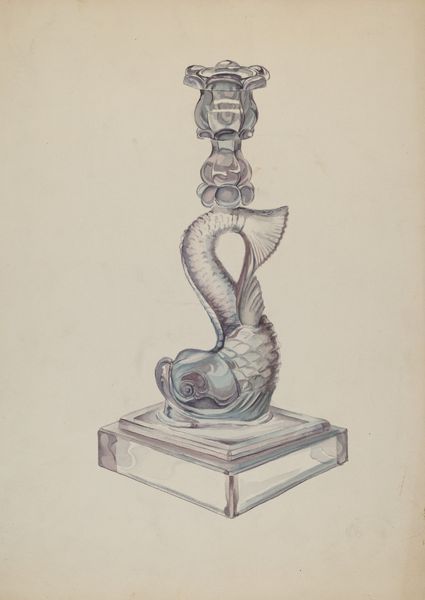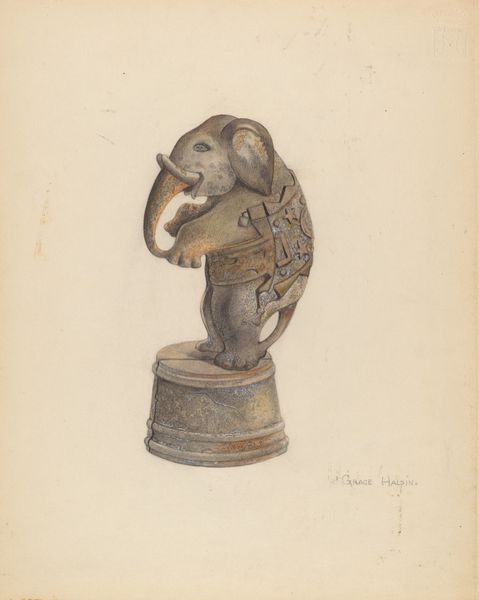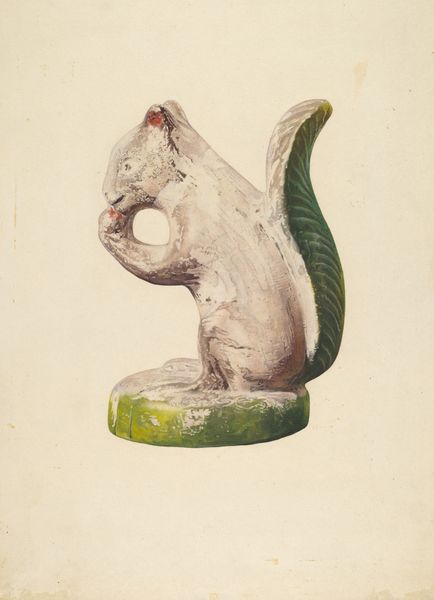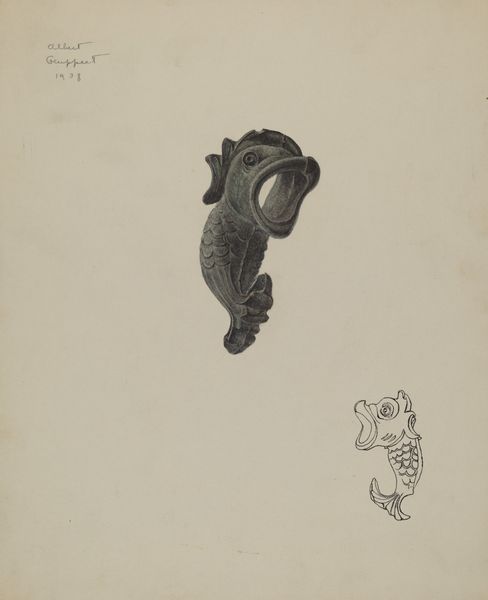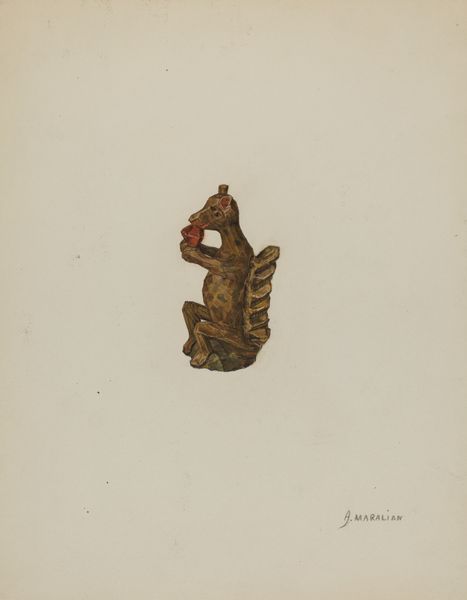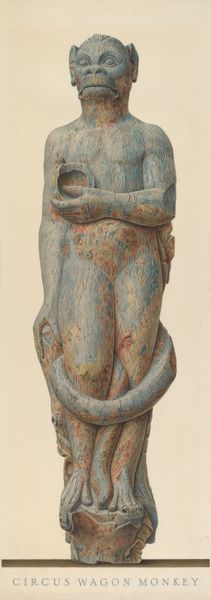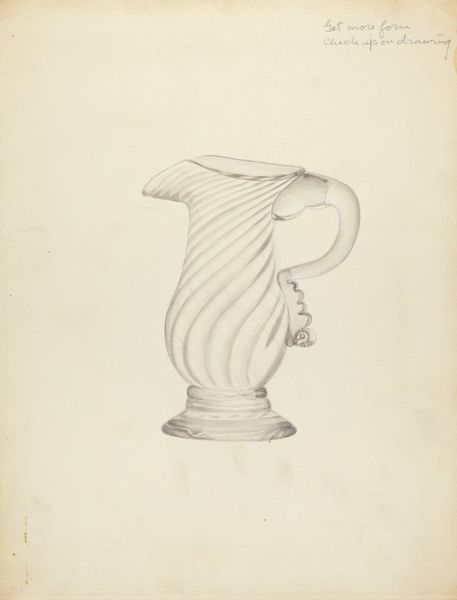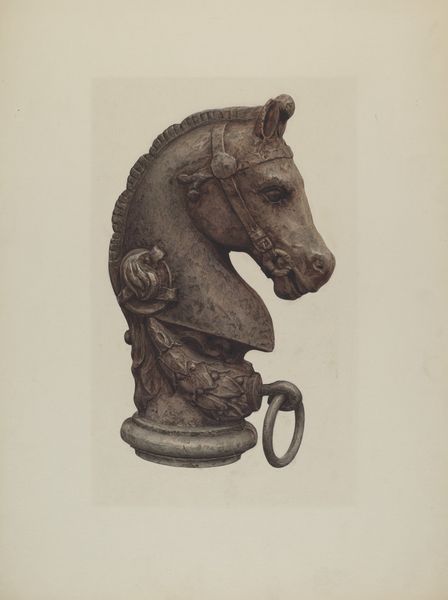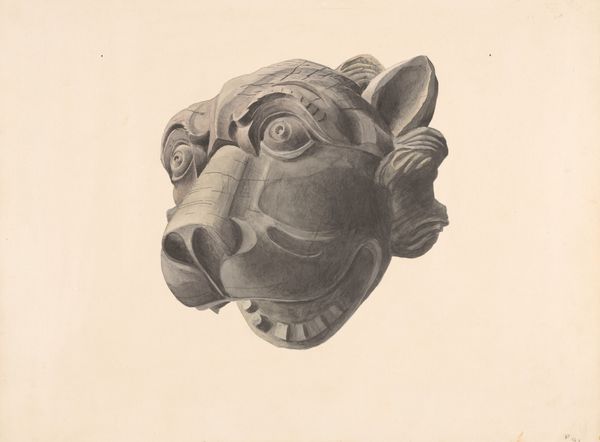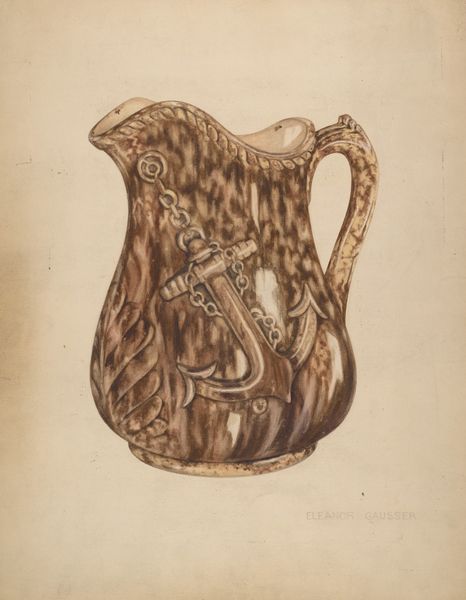
drawing, watercolor
#
portrait
#
drawing
#
watercolor
#
folk-art
#
watercolor
Dimensions: overall: 33.5 x 24.3 cm (13 3/16 x 9 9/16 in.) Original IAD Object: 7" high
Copyright: National Gallery of Art: CC0 1.0
Editor: Here we have Inez McCombs' "Pa. German Chalkware Squirrel" from around 1939. It looks like a watercolor and graphite drawing. I’m struck by its almost haunting quality. What kind of story do you think this piece is trying to tell? Curator: Ah, a haunting indeed, like a forgotten lullaby. I see a whimsical charm fighting its way through the muted palette. McCombs captured not just a squirrel, but a symbol, almost totemic. Pennsylvania German folk art often embraces this duality - joy and melancholy intertwined. What do you make of the squirrel’s expression? Does it seem entirely…content? Editor: Not really! There's something almost sad about its eyes. Like it knows more than it's letting on. I’m curious, what's the story behind chalkware figures anyway? Curator: Imagine poorer communities, craving beauty, mimicking the wealthier homes with their fancy ceramics. Chalkware was their accessible art form: plaster figures brightly painted. McCombs' watercolor preserves that essence, that aspiration towards beauty amidst simplicity. A longing for joy in everyday life. Does knowing this change how you feel about that "haunting" quality? Editor: Absolutely. It shifts it from something eerie to something…tender. It's like a memory of a dream, faded but still present. Curator: Precisely. It is the whisper of yesterday's dreams and tomorrow's hopes painted onto the humblest of objects. A very human longing, wouldn't you agree? Editor: Definitely. Thanks, I see this little squirrel in a whole new light now. Curator: My pleasure. Now I see a different forest in my mind's eye too, one painted in watercolors and brimming with folklore.
Comments
No comments
Be the first to comment and join the conversation on the ultimate creative platform.

